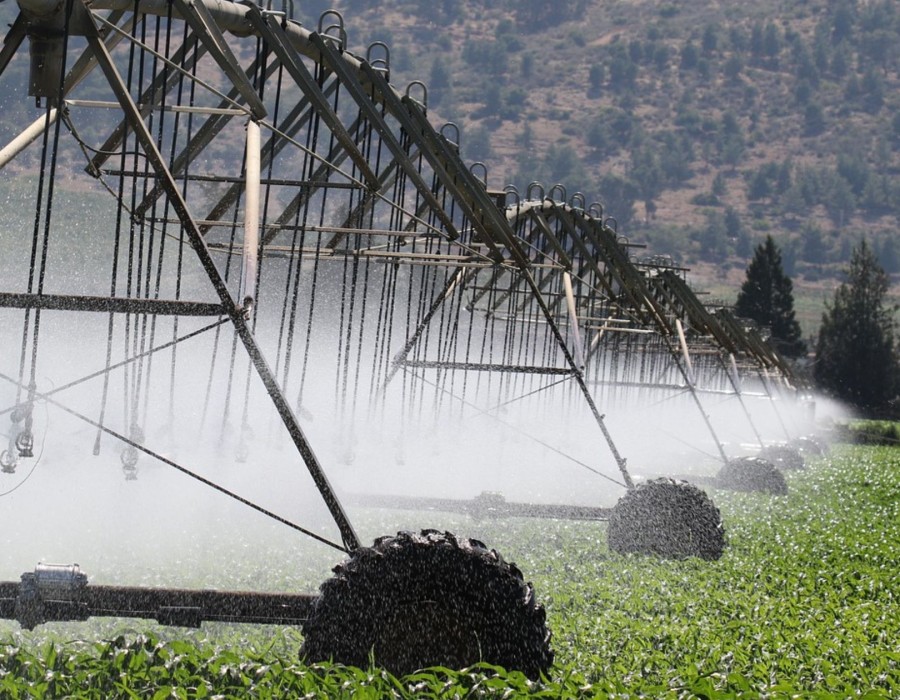In today’s world, growing enough food for everyone depends on smart farming. Water plays a big role in making crops grow strong. Too little water results in poor yields, while excessive water usage wastes resources. That’s where center pivot irrigation shines. This system has transformed farming by saving water, boosting crop harvests, and making land management easier worldwide. Imagine fields that water themselves evenly, saving labor and increasing productivity—that’s the power of center-pivot systems.
The Evolution of Irrigation Technology
Historical Background
Long ago, farmers used simple methods, such as watering fields with buckets or basic canals. Over time, they learned how to control water better. The 19th century saw the invention of sprinklers and piped water. These early steps helped farmers reduce waste and increase crop success.
Emergence of Center Pivot Systems
It all started in the 1940s and 1950s. Inventors looked for a way to water large fields quickly and efficiently. They developed the first circular irrigators that could move around a central point. The idea caught on fast in dry regions where water is scarce. Now, millions of acres worldwide use this tech to grow more food with less water.
Technology Advancements Over Time
Today, automation and sensors are part of modern systems. They adjust water flow based on real-time needs. The Internet of Things (IoT) allows farmers to manage systems remotely. These upgrades make irrigation more precise, saving water and energy while maximizing crop yields.
How Center Pivot Irrigation Works
Basic Components of a Center Pivot System
The main structure is a long arm or span attached to a wheeled tower. This tower sits on a central pivot point. Sprinkler nozzles are placed along the span, connected by pipes. Pumps supply water from lakes, wells, or reservoirs. The entire setup is engineered to cover large fields with minimal effort.
Operation Mechanics
Once turned on, the system slowly rotates in a circle around the pivot point. It waters a big, round area, often reaching hundreds of acres. Water is sprayed evenly; the movement ensures all parts of the field get enough moisture. Precision nozzles control how much water lands on the crop. The result is a uniform, efficient watering pattern.
System Setup and Design Considerations
Choosing the right irrigation design and construction depends on your land size and shape. For example, irregular fields may need custom layouts. Water source location and pressure are also key factors. Farmers can design systems tailored for specific crops or terrains, ensuring optimal performance.
Benefits of Center Pivot Irrigation
Water Efficiency and Conservation
Compared to traditional flood irrigation, pivot systems cut water use significantly. They reduce runoff and evaporation, saving thousands of gallons per acre. Studies show water savings of up to 30-50%, making farming more sustainable.
Increased Crop Yields
Uniform watering leads to healthier plants and better crops. Farmers report harvest increases of 10-20% after switching to pivot systems. Consistent moisture helps crops mature faster and resist drought stress.
Reduced Labor and Operational Costs
Automation means less manual work, saving time and money. Once set up, the system runs with minimal oversight. Its durability means fewer repairs and a longer lifespan, lowering long-term costs.
Environmental Impact
Smart irrigation helps protect soil health by minimizing erosion. It prevents excess runoff that could pollute nearby water bodies. Growing crops sustainably is easier with efficient water management.
Challenges and Limitations
Initial Investment and Cost
These systems aren’t cheap. Cost varies based on size, features, and land shape. Farmers need to weigh the upfront expense versus long-term savings.
Technical and Maintenance Needs
Complex systems require skilled workers to troubleshoot when problems arise. Regular maintenance keeps systems running smoothly. Without proper care, breakdowns can happen, affecting crop watering schedules.
Water Availability and Quality Concerns
Having a reliable water source is crucial. Poor water quality can clog nozzles or damage parts. Farmers must test the water and invest in filters if needed. The scarcity of water limits where pivot systems can operate effectively.
Regional Limitations
In hilly or uneven terrain, pivot systems face challenges. They work best on flat land. For more rugged areas, alternative irrigation methods may be necessary. Climate and soil types also influence system design and usefulness.
Future Trends and Innovations
Smart Irrigation Technologies
New systems use IoT sensors and AI to monitor soil moisture and weather. They automatically adjust watering schedules, making farming even smarter. Real-time data leads to better decisions and resource use.
Sustainable and Eco-friendly Solutions
Recycling water and using solar energy are growing trends. Low-pressure systems and drip options inside pivot setups help conserve even more water. These innovations make irrigation greener and more cost-effective.
Policy and Regulation Impact
Governments worldwide are promoting efficient water use through various policies. These regulations aim to protect water resources and encourage sustainable farming practices by guiding how irrigation systems are designed, managed, and maintained.
Conclusion
Center pivot irrigation is a true breakthrough in modern farming. It combines technology with practicality to make agriculture more efficient, productive, and eco-friendly. By conserving water and increasing yields, these systems help feed a growing world. As innovations continue, adopting advanced irrigation design becomes essential for farmers aiming for long-term success. Embracing this technology means better crops, smarter water use, and a healthier planet. Investing in center pivot systems isn’t just smart—it's necessary for future food security.






Comments